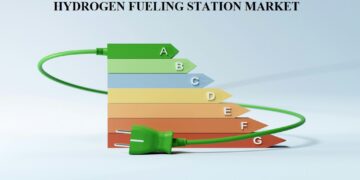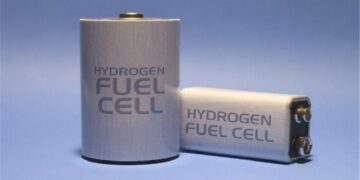The Orlando Utilities Commission (OUC) is pursuing the permitting for several new air emissions controls for its partially coal-fired Stanton Energy Center.
The commission’s October application for this permitting was posted on Nov. 26 to the website of the Florida Department of Environmental Protection and is still pending. The application was written by consultant Golder Associates.
The Stanton Energy Center (SEC) is a nominal 1,876-MW facility. It consists of: two fossil fuel fired boiler electrical generating units (Units 1 and 2); two combined cycle combustion turbine-electrical generators (Units A and B); solid fuels, fly ash, limestone, gypsum, slag, bottom ash storage and handling facilities; and fuel oil storage tanks.
Units 1 and 2 fire coal and natural gas and have a combined output of 936 MW. Unit A fires natural gas and diesel fuel and has a total nominal capacity of 640 MW. Unit B fires natural gas and fuel oil and has a design capacity of 300 MW.
The two coal units are equipped with the following air emissions control equipment: dry electrostatic precipitators (ESP) for control of particulate matter (PM) emissions; wet flue gas desulfurization (FGD) systems for control of SO2 emissions; low NOx burners (LNB) and overfire air systems (OFA) for control of NOx emissions. In addition, Unit 2 has a selective catalytic reduction (SCR) system to further control NOx. Unit 1 began operation in 1987 and Unit 2 began operation in 1996.
The purpose of the pending permit application is to request authorization for the installation of several pollutant reduction systems. Specifically, Orlando is requesting the installation of a Fuel Lean Gas Reburn (FLGR) system on Units 1 and 2 for additional NOx reduction. This is in response to the U.S. EPA’s requested implementation of the Cross State Air Pollution Rule (CSAPR) by 2015. Orlando is also proposing upgrades to the wet FGD system on Unit 2. These proposed upgrades would be similar to the upgrades already completed on Unit 1.
Finally, OUC proposes to install an activated carbon injection (ACI) system similar to the temporary system previously authorized by the DEP. This system will be used in combination with chemical spray technology to mitigate mercury emissions. The proposed portable ACI system may be used on either Unit 1 or Unit 2. The proposed chemical spray technology is based on spray application of halogen-based additives such as calcium bromide (CaBr2) into the coal feeder and sodium hydrosulfide (NaHS) into the wet FGD system.
Some of this equipment has been recently tested at Stanton
The proposed FLGR installation on Units 1 and 2 would theoretically reduce NOx on Unit 1 by 30% and on Unit 2 by an amount to be determined. The proposed system would require approximately 5% to 10% firing of natural gas above the “over-fire air” (OFA) zone in each of the boilers. Specifically, 10% of the total coal heat input of each unit would be




































